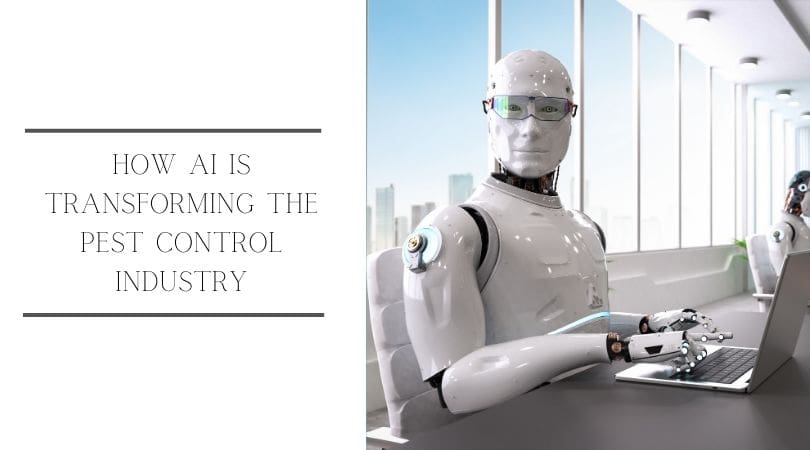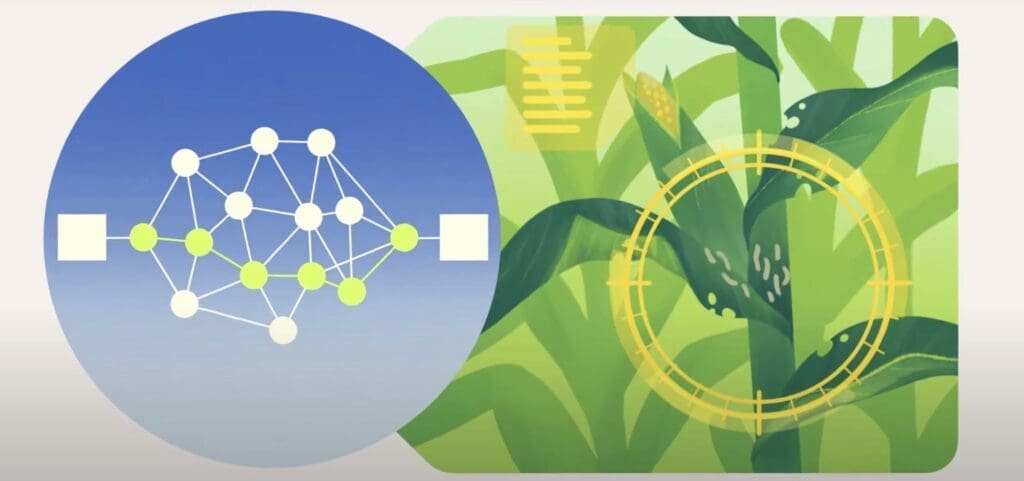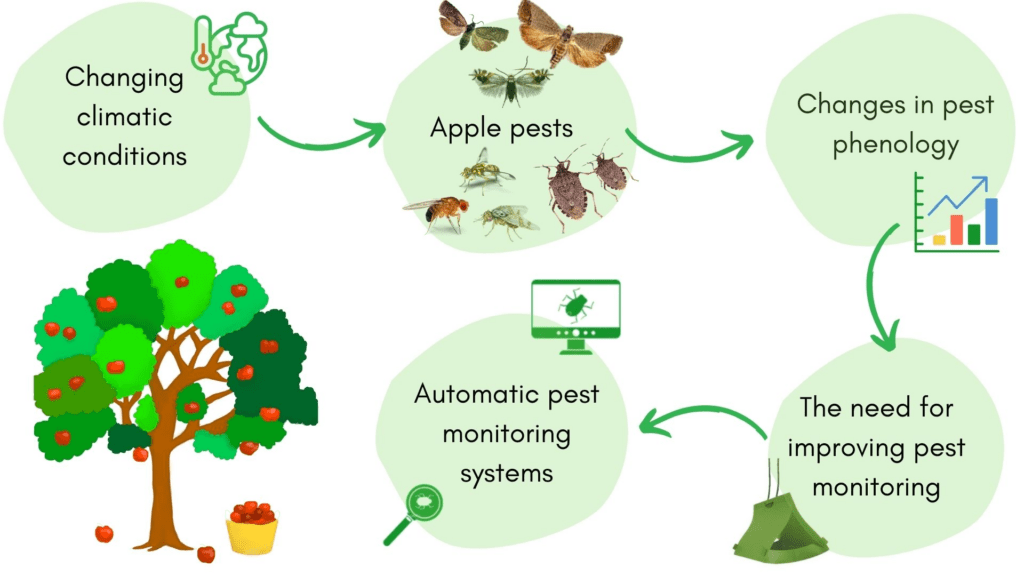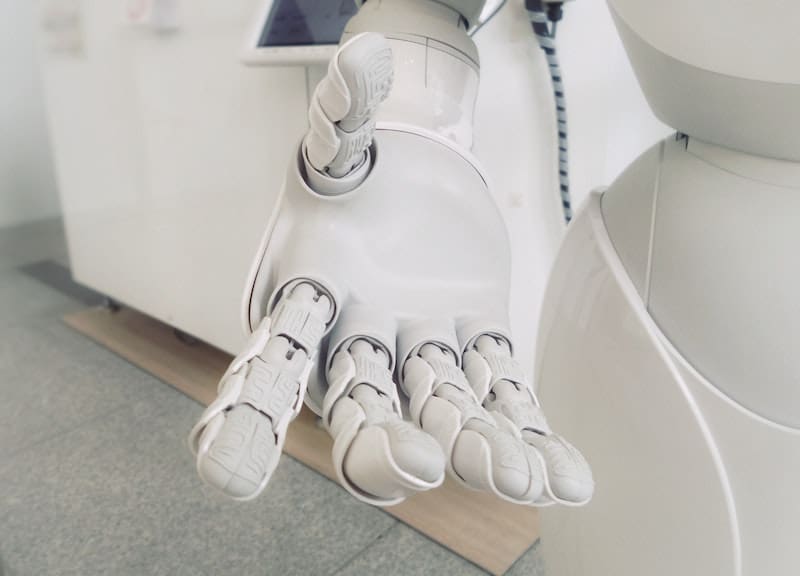Pest control has come a long way from traditional methods, thanks to the integration of Artificial Intelligence (AI). In this article, we will explore the significant role that AI plays in modern pest control. From sophisticated traps and sensors to predictive analysis, AI is revolutionizing the way we detect, monitor, and prevent pest infestations. With its ability to collect and analyze vast amounts of data, AI is empowering homeowners and professionals alike in their mission to keep pests at bay. So, let’s dive into the fascinating world of AI in modern pest control and uncover its incredible potential.

1. Overview
In the field of pest control, the advancements in artificial intelligence (AI) have opened up new possibilities and revolutionized the way pests are detected, prevented, and exterminated. AI technology has proven to be a game-changer in this industry, offering a range of benefits such as improved accuracy, cost-effectiveness, and efficiency. This article will provide a comprehensive understanding of AI in pest control, exploring its applications, advantages, challenges, and future developments.
2. Understanding AI
2.1 What is AI?
Artificial intelligence, commonly known as AI, refers to the simulation of human intelligence in machines that are programmed to think and learn like humans. It encompasses various subfields, such as machine learning, deep learning, natural language processing, and computer vision, which enable machines to analyze and interpret data, make decisions, and perform tasks without explicit programming.
2.2 How does AI work?
AI systems typically operate by processing large amounts of data and using algorithms to identify patterns, learn from experiences, and make predictions or decisions. Machine learning techniques, for example, enable AI models to analyze data, recognize patterns, and make predictions based on the identified patterns. Deep learning, on the other hand, involves the use of artificial neural networks, mimicking the structure of a human brain, to process and analyze complex data.
2.3 AI applications in various industries
AI has found applications in a wide range of industries, including healthcare, finance, transportation, and agriculture. In healthcare, AI is used for diagnosing diseases, analyzing medical images, and designing personalized treatment plans. In finance, AI algorithms are employed for fraud detection, risk assessment, and algorithmic trading. The use of AI in transportation has led to the development of autonomous vehicles and advanced traffic management systems. In agriculture, AI is utilized for crop monitoring, yield prediction, and optimization of farming techniques.
3. AI in Pest Control
3.1 Introduction to AI in pest control
Pest control is an essential aspect of maintaining a pest-free environment in residential, commercial, and agricultural settings. Traditionally, pest control measures have relied on manual inspection, baiting, trapping, and the use of chemical pesticides. However, the integration of AI technology has revolutionized the industry, allowing for more effective and efficient pest control strategies.
3.2 Advantages of using AI in pest control
The use of AI in pest control offers numerous advantages over traditional methods. Firstly, AI-powered systems can detect and identify pests with greater accuracy and speed compared to manual inspections. By leveraging machine learning algorithms, these systems can analyze vast amounts of data and recognize patterns associated with pest presence. Secondly, AI enables predictive analytics, allowing pest control professionals to identify pest-prone areas and take proactive measures to prevent infestations. Additionally, AI-powered robotic systems and drones can be utilized for precise and targeted application of pest control measures, reducing the overall usage of chemical pesticides and minimizing environmental impacts.
4. AI-Based Pest Detection
4.1 Automated monitoring systems
AI-based automated monitoring systems have revolutionized pest detection by providing continuous, real-time surveillance of pest activity. These systems utilize a combination of sensors, cameras, and AI algorithms to monitor areas susceptible to pest infestations. The sensors can detect physical and chemical signals emitted by pests, such as pheromones or fecal matter, while cameras capture visual data for analysis. AI algorithms then analyze the collected data to identify pest activity, allowing prompt intervention and treatment.
4.2 AI-powered pest identification
In conjunction with automated monitoring systems, AI-powered pest identification technology has significantly improved the accuracy and efficiency of pest identification. Machine learning algorithms are trained on large databases of pest images, allowing them to recognize and classify different species of pests. This technology enables rapid and accurate identification, facilitating prompt and appropriate pest control measures.

5. AI-Driven Pest Prevention
5.1 Predictive analytics for identifying pest-prone areas
One of the key advantages of AI in pest control is its ability to harness predictive analytics for identifying pest-prone areas. By analyzing historical data on pest infestations, weather patterns, and environmental conditions, AI algorithms can identify areas with a higher likelihood of pest outbreaks. This enables pest control professionals to implement preventative measures, such as targeted application of pesticides or the use of pest-resistant crops, to minimize the risk of infestations.
5.2 Optimized scheduling and treatment plans
AI algorithms can optimize scheduling and treatment plans in pest control operations, enhancing efficiency and resource management. By analyzing data on factors such as pest activity, environment, and treatment effectiveness, AI can determine the most effective timing and frequency of pest control interventions. This ensures that resources are utilized in the most efficient and cost-effective manner, reducing unnecessary chemical pesticide applications and minimizing environmental impacts.
5.3 Precision pest control with drones
Drones equipped with AI technology have emerged as a powerful tool in precision pest control. These unmanned aerial vehicles (UAVs) can be equipped with various sensors and cameras to collect data on pest presence and environmental parameters. AI algorithms then analyze the collected data and provide precise information on pest activity, allowing for targeted pesticide application or other pest control measures. Drones enable quick and accurate monitoring of large areas, reaching inaccessible or dangerous locations, and reducing the need for manual labor.
6. AI in Pest Extermination
6.1 AI-enabled pest trapping and extermination
AI technology has facilitated the development of advanced pest trapping and extermination systems. AI-powered traps can recognize and selectively target pests while minimizing harm to beneficial organisms. These traps can be equipped with sensors to detect the presence of pests and deploy appropriate measures, such as capturing or exterminating pests using non-toxic methods. AI algorithms continuously analyze data from the traps to refine the targeting and trapping mechanisms, improving overall efficacy.
6.2 Intelligent pest surveillance
With the integration of AI, surveillance systems used in pest control have become more intelligent and effective. AI-powered cameras and sensors can accurately detect and track pests, enabling real-time monitoring and surveillance. Moreover, these systems can distinguish between pests and non-target organisms, reducing unnecessary interventions and minimizing environmental impacts. Intelligent pest surveillance systems can also be integrated with automated alert systems, notifying pest control professionals when pest activity exceeds a predetermined threshold.

7. AI for Data Analysis
7.1 Big data in pest control
The field of pest control generates vast amounts of data from various sources, including monitoring systems, environmental sensors, and historical records. AI technology is instrumental in analyzing big data to extract valuable insights and improve decision-making in pest control operations. By processing and analyzing diverse data sets, AI algorithms can identify trends, correlations, and factors influencing pest infestations, enabling more targeted and efficient pest control strategies.
7.2 AI-driven data analysis for pest control
AI-driven data analysis plays a vital role in enhancing the efficiency and effectiveness of pest control operations. By combining data from multiple sources, including pest activity records, weather data, and geographic information, AI algorithms can generate predictive models to forecast pest outbreaks and determine the most appropriate control measures. This data-driven approach enables professionals to make evidence-based decisions, allocate resources more effectively, and respond swiftly to evolving pest situations.
8. Ethical Considerations
8.1 AI ethics in pest control
As with any application of AI, ethical considerations must be addressed in the context of pest control. The use of AI in pest control raises questions about privacy, data security, and potential unintended consequences. It is essential to ensure that the collection and analysis of data for pest control purposes are conducted transparently, with the appropriate consent from individuals or organizations involved. Additionally, measures should be implemented to protect the privacy and security of collected data, ensuring that it is not misused or accessed by unauthorized parties.
8.2 Balancing AI and human intervention
While AI technology has transformed the pest control industry, it is important to strike a balance between AI-driven automation and human intervention. Human expertise and judgment are still crucial in the decision-making process, especially in complex or ambiguous situations. Professionals in the field must be equipped with the necessary knowledge and skills to understand, interpret, and augment the outputs of AI systems. Close collaboration between AI technology and human operators can ensure that the advantages of AI are maximized while maintaining ethical and responsible pest control practices.

9. Challenges and Limitations
9.1 Reliance on accurate data
The effectiveness of AI in pest control relies heavily on the availability of accurate and reliable data. Accurate data on pest activity, environmental conditions, and treatment outcomes are essential for developing robust AI models and making informed decisions. However, challenges may arise in data collection, including inconsistencies, biased sampling, or insufficient data. It is crucial to address these challenges and ensure that data collection processes are standardized, rigorous, and representative to maximize the potential of AI in pest control.
9.2 Training AI algorithms
Training AI algorithms in pest control requires significant amounts of high-quality labeled data. Acquiring and annotating large datasets of pests and associated environmental variables can be time-consuming and resource-intensive. Additionally, continuous updates and fine-tuning of AI models are necessary to adapt to changing pest species, behaviors, and control techniques. Investment in research and development, collaboration between industry and academia, and shared databases can help overcome these challenges and improve the accuracy and adaptability of AI algorithms in pest control.
9.3 Cost of implementing AI in pest control
Integrating AI technology into pest control operations may involve significant upfront costs, including investment in hardware, software, training, and infrastructure. Small-scale pest control service providers or organizations with limited budgets may find it challenging to implement AI systems. However, the long-term benefits of AI, such as improved accuracy, efficiency, and reduced chemical pesticide usage, may outweigh the initial costs. Continued development and innovation in AI technology, coupled with government incentives or grants, can help make AI more accessible and affordable for all stakeholders in the pest control industry.
10. Future of AI in Pest Control
10.1 Advancements in AI technology
The future of AI in pest control holds promising advancements and innovations. AI algorithms will continue to improve in accuracy, adaptability, and speed, enabling more precise pest detection, prevention, and extermination. The development of advanced sensors, robotic systems, and IoT (Internet of Things) integration will further enhance the capabilities of AI in pest control. Furthermore, the advent of quantum computing may revolutionize data processing and analysis, unlocking new possibilities for AI algorithms to tackle complex pest control challenges.
10.2 Integration of AI with IoT
The integration of AI with IoT technology will pave the way for more intelligent and connected pest control systems. IoT devices, such as smart traps, environmental sensors, and surveillance cameras, can collect real-time data on pest activity, environmental conditions, and treatment effectiveness. AI algorithms can then process and analyze this data in real-time, allowing for dynamic and automated pest control interventions. The synergy of AI and IoT will enable proactive and targeted pest control strategies, minimizing pest-related risks and optimizing resource utilization.
10.3 Enhanced pest control with AI
As AI technology continues to develop, the scope of its application in pest control will expand. Advanced AI algorithms may enable the development of self-learning systems capable of adapting to evolving pest behaviors and control techniques. Furthermore, AI-driven robotics and automation may eliminate the need for human involvement in routine pest control tasks, improving operational efficiency and reducing labor costs. The integration of AI with other emerging technologies, such as blockchain for data security and edge computing for real-time processing, will further enhance the overall effectiveness and sustainability of pest control practices.
In conclusion, AI has emerged as a powerful tool in modern pest control, revolutionizing the way pests are detected, prevented, and exterminated. The integration of AI technology offers a range of benefits, including improved accuracy, efficiency, and cost-effectiveness. From automated monitoring systems and AI-powered pest identification to precision pest control with drones and AI-driven data analysis, AI has transformed the pest control industry. However, challenges such as data accuracy, algorithm training, and implementation costs must be addressed to fully harness the potential of AI in pest control. With continued advancements in AI technology and its integration with other emerging technologies, the future of pest control looks promising, with more intelligent, proactive, and sustainable approaches.


I am Randy, the author behind PestControld.com. Drawing from decades of experience, I aim to provide valuable insights, expert advice, and practical recommendations to help you make informed decisions when assessing viable pest control solutions.